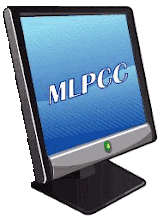Developing a web page can be a very fun and beneficial endeavor if developed the right way and managed effectively. And surprisingly, you may not need to spend as much money as you think. One of the most important pieces to remember is that the most critical elements of designing a web site do not come in the site design itself, but rather the planning and search engine optimization phases. In this article we will focus on the beginning portions of the planning stages.
The first question I like to ask my clients is “what are your goals and objectives for the site”. In other words, what would they like their user to gain from being on their site. And as a result, what information would they want the user to walk away with from visiting their site. Image is an important piece to this equation as well. The company’s goals and objectives and image that they are trying to portray should be clear throughout their site.
The second phase involves gathering information. Think about what information should be contained within the site and who has the knowledge to provide such information. Have these staff members gather the information and meet to decide which information is pertinent to the site. This information must also fulfill the user’s expectations and overall scope of the site.
Next, once the information is organized and the scope is beginning to become clear, start thinking about what and how much technology should be needed and what the expense may be. For example, do you need a digital camera to take pictures? How much bandwidth is needed? Is there a database needed or secure a portion of the site? How much support and ongoing maintenance will the site need?
When putting the site together, thinking of the audience can play a key role in organizing in the process of designing a web page. Know who will be surfing your site and appeal to them. Let them critique a sample portion of the site and see if it appeals to them. After all, they are your potential clients and could play a key role in making a sale or getting the right type of clientele to your site. Once this has been established, make the correct changes and make sure that all information reflects the goals, values, and intent of the person or company. And make sure that it is abundantly clear and consistent on each page of the site. In may be a good idea at this point to set a maximum page count to ensure that they project is moving along and is on track with the design and allocated budget.
These are the first important steps for designing a web site. Although they seem tedious and time consuming, it can save a lot of headaches and frustration later on, believe me. I hope that these initial steps are beneficial for you and thank you for your time and reading this article. For any questions or comment, please reply to sal@mainlinepcconsulting.com
Main Line PC Consulting is a Philadelphia web design company dedicated to giving small and medium sized businesses a presence on the world wide web. They can also assist you in creating business brochures, cards, forms, flyers, address labels and more! The article below was written by the President of the company who has been in the technology field for over 10 years. The article is an initial one in a three part review of the stages involved in designing a successful web site. Subsequent articles will follow in the coming months.
Main Line PC Consulting is a Philadelphia web design company dedicated to giving small and medium sized businesses a presence on the world wide web. The article is an initial one in a three part review of the stages involved in designing a successful web site.
Thursday, September 10, 2009
Web Design Building Blocks - Part1
Labels:
internet advertising,
main line,
pa,
philadelphia,
web design,
web designers,
web page,
web site,
website
Subscribe to:
Post Comments (Atom)

No comments:
Post a Comment